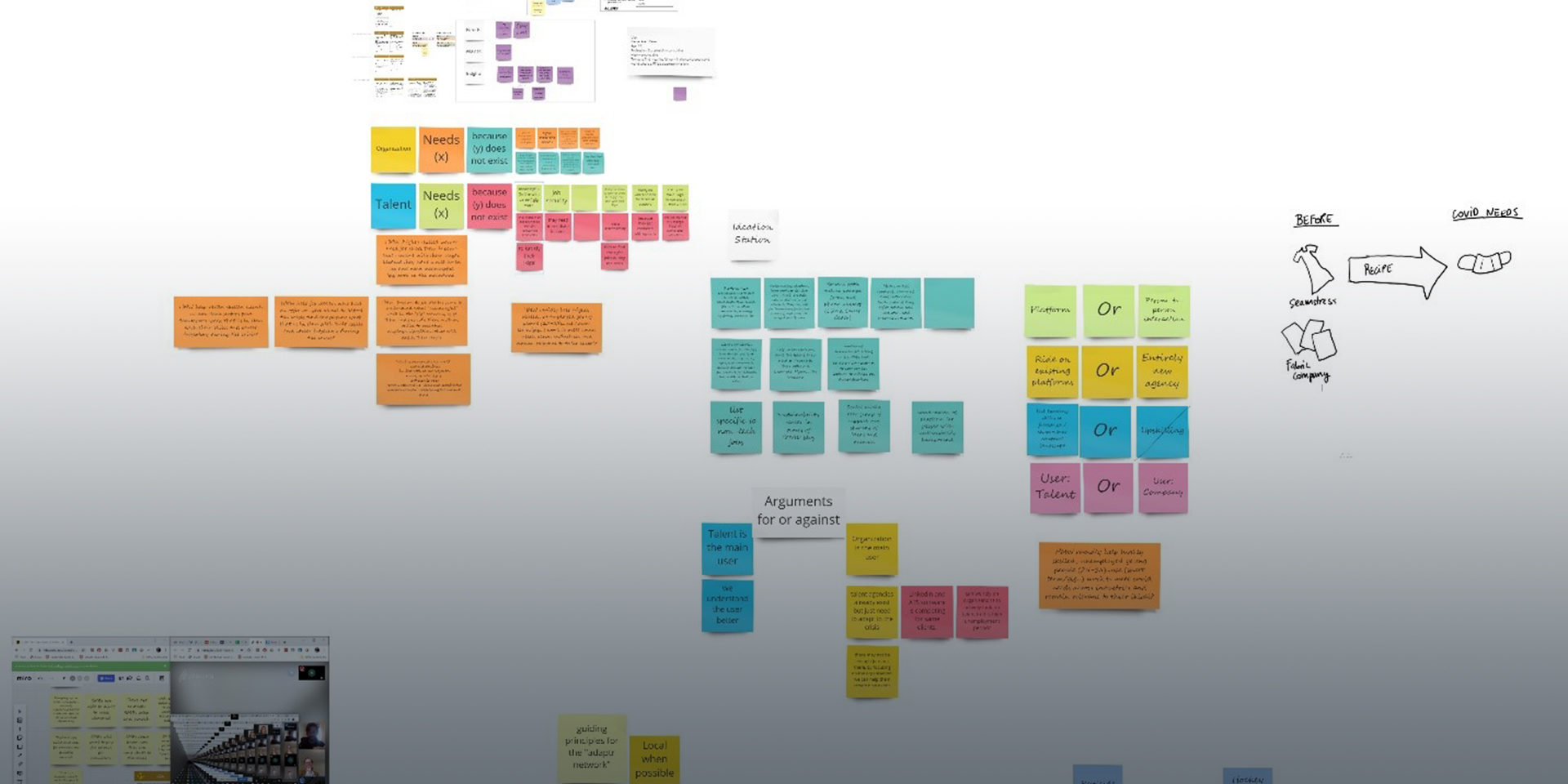2. Speaking of your team, how did you decide which problem you were going to create a solution for, particularly when the overarching problem is so complex?
Initially, I wanted to address the rise in domestic violence due to the unfortunate reality that some women and children are forced to be sequestered in a home with their abuser. Due to the mix of insights, experiences, and backgrounds of participants within my time zone, however, I was placed on a team assembled to work on unemployment. In the UNLEASH lab, it’s best practice to work on a challenge for which you can gather the most first-hand insight to zero in on the root of a problem. Two of my teammates were frustrated by the unemployment limbo they were thrown into with their summer employers putting internships on hold until the conclusion of the COVID-19 pandemic. Given my teammates’ proximity to the issue — sticking to the issue of unemployment as a result of stay-at-home orders — I felt comfortable and energized to work on this topic.
We started with exercises within UNLEASH’s problem-framing phase of the innovation process and articulated the friction within unemployment that we wanted to resolve. Why are highly skilled workers being left in the lurch when their skills can be useful in meeting the challenges brought on by COVID-19? We then moved on to the ideation stage, identifying possible solutions with the end user – highly skilled workers – in mind. In identifying a solution for their problem though, my team repeatedly hit roadblocks as we realized the service we were designing was nothing more than a temp agency that would be operational under the huge assumption that we would not saturate the labor market of employers who were still hiring in the time of quarantine. We returned to the problem-framing stage. I began to think about the inspiring stories of small- and medium-sized businesses (SMBs) who were pivoting their business operations and providing new product and service offerings to meet COVID-19 needs within their communities. Instead of acting as a liaison between unemployed skilled labor and employers across numerous sectors, we began to think about how we might be able to help local SMBs keep their businesses open by helping them adapt to support the need for COVID-19 essential commodities and services in their communities. By keeping SMBs operational, an outcome would effectively be combatting underutilization and unemployment. We spent the remainder of the weekend building a prototype of our solution, Adapter, a non-profit emergency response tech platform that rapidly helps SMB owners identify if and how they can adapt their business operations to support efforts in the COVID-19 crisis. Adapter matches SMB’s self-identified resources with COVID-19 commodity or service needs in their local community.

3. What were some other COVID-19-related problems that hackathon solutions addressed? What happens now?
The hackathon tackled topics such as social distancing, homeschooling, supply chain efficiencies and health commodity procurement, misinformation, and mental health. For example, a solution called Keep it Moving! would integrate into existing navigation applications and recommend alternative routes or forms of transportation for essential workers who might be reliant on public transport but who need to avoid crowded public spaces to reduce the risk of transmitting or contracting COVID-19. Breathe Easy would allow for the continuance of outdoor recreation activities by using mobile data to determine the population density of public spaces and assigning a social distancing score.
Another example is Keep ‘Em Buzy, which aggregates, validates, and provides open source educational content from around the world through a single platform to help parents now responsible for home-schooling and managing more of their children’s time and activity at home.
Following the hack, UNLEASH is supporting participating teams by providing information about COVID-19-specific partnering and funding opportunities to help them pursue implementation and scaling of their solutions. Fortunately, we can tap into the UNLEASH alumni network for support, and the UNLEASH Secretariat and partners are helping to make connections with subject-matter experts and to identify possible team members where possible. Alumni also can submit their solutions to UNLEASH+, the UNLEASH Global Innovation Lab’s annual pre-acceleration program supported by Chemonics. Through UNLEASH+, teams receive the tools and support to develop a comprehensive business model and plan, positioning them for funding and partnership opportunities after the lab. Ultimately, it is up to the UNLEASH alumni who participated in the hackathon, as well as other passionate young leaders around the world, to pursue solutions to challenges facing their communities during this unprecedented time.
Check out the solutions submitted by participants around the world via the UNLEASH Solutions Airtable.
Posts on the blog represent the views of the authors and do not necessarily represent the views of Chemonics.



 As Lead Scale Partner for the
As Lead Scale Partner for the 




